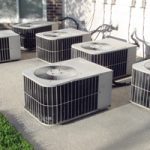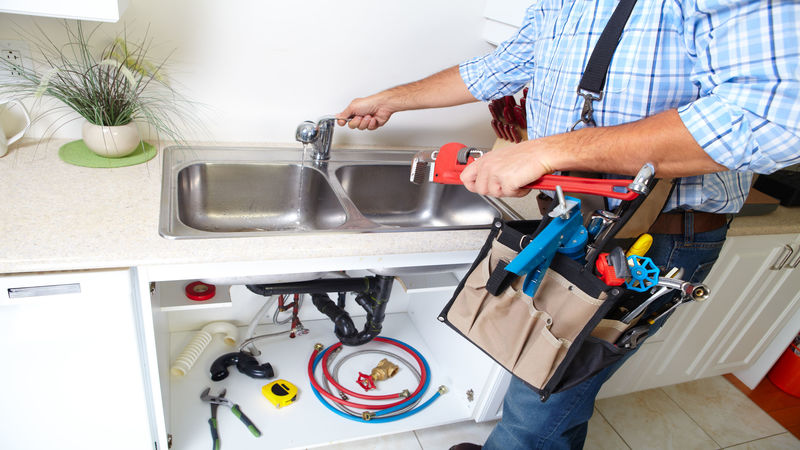Your home’s sewer line plays a crucial role in carrying wastewater safely away from your property. When it’s working properly, you rarely think about it, but when something goes wrong, it can quickly turn into a major issue requiring immediate attention. For homeowners in Arizona, unique climate and soil conditions contribute to a range of potential sewer line problems.
Understanding the causes of sewer line damage can help you catch issues early, avoid property damage, and know when to call for emergency plumbing services or a professional sewer line repair. In this article, we’ll explore the leading causes of sewer line damage specific to Arizona homes and what you can do to prevent it.
1. Tree Root Intrusion
One of the most common causes of sewer line damage in Arizona and across the country is invasive tree roots. Trees naturally seek out moisture, and sewer lines offer an ideal water source. Even a small crack or loose joint can allow roots to infiltrate the pipe. Over time, these roots can grow and cause significant blockages or breaks in the line.
In Arizona’s dry desert climate, tree roots may travel farther than usual underground in search of water, increasing the likelihood of encountering your sewer system. If left untreated, the root growth can crack pipes, cause backups, and require full pipe replacement.
2. Soil Shifting and Ground Movement
Arizona is known for its expansive clay soils and dry conditions. During periods of heavy rainfall or drought, the soil can expand or contract, putting stress on underground pipes. This shifting soil can lead to misaligned or collapsed sewer lines, especially in older properties with aging infrastructure.
Soil movement may go unnoticed for years until visible signs appear, such as yard depressions, sewage odors, or slow drains. If you notice these symptoms, it’s time to call for emergency plumbing services to prevent a full system failure.
3. Corrosion and Pipe Aging
Older Arizona homes built before the 1980s may still have clay or cast-iron sewer pipes. Over time, these materials can deteriorate due to corrosion or wear. Cast iron, in particular, is susceptible to rust and scaling, which can restrict flow or lead to pipe collapse.
As pipes age, they become more vulnerable to cracks, leaks, and root intrusion. Homeowners in older neighborhoods should consider a sewer inspection every few years to determine whether a proactive sewer line repair or replacement is necessary.
4. Hard Water Buildup
Hard water is a common issue in Arizona due to high concentrations of calcium and magnesium in the water supply. While it’s more widely associated with scaling in faucets and appliances, hard water can also impact your sewer lines. Over time, mineral deposits may accumulate inside pipes, reducing their internal diameter and contributing to clogs and flow issues.
Although hard water alone may not cause severe structural damage to your sewer line, it can combine with other factors (like grease or waste buildup) to accelerate the need for professional maintenance or repairs.
5. Improper Installation or Poor Design
In some cases, sewer line issues stem not from external forces but from poor design or incorrect installation. If the sewer line was laid with insufficient slope, used improper materials, or had weak connections, it’s more likely to fail prematurely.
Arizona’s building codes have evolved over time, so older homes may not meet modern standards. A sewer camera inspection can help identify flaws in your system’s design and determine if a sewer line repair or full replacement is warranted.
6. Blockages from Grease, Waste, or Foreign Objects
Even in homes with modern plumbing, everyday habits can lead to sewer line problems. Flushing inappropriate items (like wipes, paper towels, or feminine products) or pouring grease down the drain can lead to serious blockages over time. These materials may stick to the interior of pipes, harden, and create obstructions that cause backups or pipe pressure buildup.
In Arizona’s hot climate, these materials can congeal even faster than in cooler regions, further increasing the risk. Regular maintenance and good drainage habits are essential in preventing emergency situations.
Signs You May Need Sewer Line Repair
Wondering if your sewer line is already in trouble? Watch for these red flags:
• Foul odors around drains or outside
• Gurgling or bubbling sounds in your plumbing
• Slow-draining sinks, tubs, or toilets
• Sewage backup in low-lying drains
• Lush patches of grass in the yard (potential underground leak)
• Persistent clogs despite cleaning efforts
If you notice any of these symptoms, don’t wait. Contact a plumbing professional immediately to assess the situation.
When to Call for Emergency Plumbing Services
Some sewer line issues can’t wait for regular business hours. Situations like active sewage backup, severe leaks, or complete drainage failure require fast action. Timely response can prevent additional property damage, protect your health, and save you from costly repairs later.
When you’re dealing with an urgent plumbing problem, it’s important to rely on a reliable service that can assess the issue and provide fast, effective solutions to get your home back to normal.
Final Thoughts
Arizona homes face unique challenges when it comes to sewer line health. From invasive roots to soil shifting and hard water buildup, a number of factors can contribute to hidden damage. Knowing the signs of trouble and scheduling regular inspections can help you avoid major plumbing disasters.
For long-term peace of mind, invest in proper maintenance and partner with experienced professionals who offer dependable sewer line repair and emergency plumbing services. Clean drains and functional pipes aren’t just convenient—they’re essential to a healthy, safe home.









